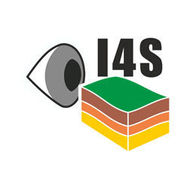Predicting key soil properties from Vis-NIR spectra by applying dual-wavelength indices transformations and stacking machine learning approaches (2023.0)
Tavakoli H., Correa J., Sabetizade M., Vogel S.
Soil and Tillage Research, 229 (), 105684
doi:10.1016/j.still.2023.105684
Abstract
Soil visible and near-infrared (Vis-NIR) spectroscopy has been widely used for soil characterization, due to its high potential for assessing different soil properties. However, despite great successes achieved by applying the method, there is a potential for further improvement, especially regarding data (pre-) processing and modeling. In this study, we employ simple ratio indices (SRI) and normalized difference indices (NDI), calculated from all combinations of different wavebands of Vis-NIR spectra, for improving the prediction of key soil properties such as calcium carbonate content (CaCO3), cation exchange capacity (CEC), clay content (Clay), sand content (Sand), nitrogen content (N), organic carbon content (OC), and pH in CaCl2 (pH). For this, we use the topsoil physicochemical and multispectral reflectance data from the Land Use/Land Cover Area Frame Survey (LUCAS) dataset. Various machine learning techniques were employed for the modeling, including partial least squares regression (PLSR), ridge regression, principal component regression (PCR), and two stacked algorithms. Based on the results obtained, both the SRI and NDI transformations significantly improved the performance of all the models compared to the untransformed data. However, SRI was superior to NDI. The stacked model PCR-poly applied on the SRI data yielded the best prediction performances for all the soil properties. The model gave RMSE (R2) values of 25.71 (0.96), 6.89 (0.80), 5.41 (0.82), 1.11 (0.92), 21.34 (0.95), 0.35 (0.94) and 13.41 (0.73) for estimation of CaCO3, CEC, Clay, N, OC, pH and sand, respectively. The findings of this study showed that applying the SRI and NDI transformations on Vis-NIR data and employing stacked models for calibration, yield performances for soil properties prediction that are similar to those obtained by using deep learning based methods on the same dataset in previous works, while being computationally less demanding.
